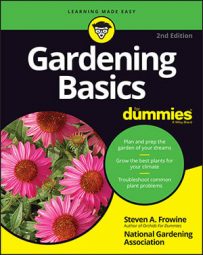Roses come in a huge array of sizes and forms. If you like roses, you can find a rose to grow no matter what kind of environment you live in. The trick is to choose the right rose for the look you have in mind.
Hybrid teas: Hybrid teas come in medium-to-tall bushes and have a vase-shaped profile. Elegant pointed buds precede big, gorgeous flowers that are usually one to a stem. They bloom continuously throughout the growing season.
Floribundas: Floribundas are short compact cluster-bloomers and were bred to be hardier than hybrid teas.
Grandifloras: A cross between hybrid teas and floribundas, grandifloras are hardier than the teas but not as cold-tolerant as floribundas. They bloom all summer.
Polyanthas: Polyanthas have a compact, shrubby habit. Their smaller flowers, which the plants produce in profusion, bloom all summer long.
Species: These are the wild forbears of modern roses, and they exhibit vigor, natural toughness, and casual beauty. They tend to bloom only in spring.
Old garden roses: These historical roses generally bloom only once in late spring for a few glorious weeks. They are also referred to as vintage, heirloom, or antique roses.
David Austin or English roses: Starting in 1963, British nurseryman David Austin electrified the rose world by successfully combining beautiful, full-petaled, richly fragrant old garden roses with modern ones to produce attractive, romantic plants.
Shrub or hedge roses: Great for growing in billowing masses or along a foundation.
This group has subgroups:
Canadian or Explorer roses: Bred in Canada these are rated cold-hardy to Zone 4, or even to Zone 3.
Buck roses: The late Dr. Griffith Buck succeeded in developing attractive low-maintenance, shrub roses that are able to tolerate the Midwest's cold winters, fickle springs, and hot and humid summers.
Rugosa roses: Hailing from Asia, these coarse-leaved, thorny bushes are a common sight along the Eastern seaboard.
Meidiland roses: Weather-tough and disease-resistant, these French-bred roses form a compact plant no more than 4 feet high and wide.
Simplicity hedge roses: Jackson & Perkins bred these roses, and the plants are without peer if you want a casual-looking shrub with plentiful, informal flowers.
Miniatures: These little rosebushes are cute and perky, ideal for pots.
Tree roses or standards: Tree roses a compact, continuous-blooming shrubs atop a tall, stem.
Climbers or ramblers: Long, pliable stems are characteristic of the climbers and ramblers; you can train these roses on a trellis, fence, or archway.
Groundcover or landscape roses: These plants are lower-growing roses that sprawl outwards rather than upwards. With dense growth, some thorniness, and scads of pretty flowers all summer, they're an outstanding landscaping solution if you love roses and have a broad, open are in need of groundcover.

